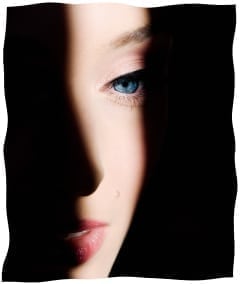Beauty of the Beast
I recently met a woman whose teeth reminded me of a picket fence bumped by a van. Packed tight in her mouth, they overlapped top and bottom, front and back. Yet she was one of the most beautiful women I’ve ever seen. We sat at a luncheon table and between talk she gently prodded arugula and hikama salad into her mouth. Lips closed, her eyes smiled and said, “Mmmm! Sooo glad to be here!” Her presence was happy, and real, and alive. How different, I thought, from the perfect smiles of so many mouths car-pooled to and from the orthodontist over so many winter-through-spring afternoons. I’ve seen my fair share of them. They remind me of paintings that are full of technical prowess but devoid of soul. And although their wearers might feel safe in their assurance that they “look good,” the smiles leave my heart and sensibilities untouched.
The Art of Imperfection
Actually, I often find myself at odds with a culture that holds us to a standard of slickness, of airbrushed images and perfect lives.
As an artist, I’m on the lookout for the shadows between the light, for the disproportion in the symmetry, and for a touch of madness in the sanity.
In teaching children to draw, I am always delighted by the little ones’ messes and scratches and rehashes that somehow capture the beauty of their subject, and its inner point. And I feel sad when they suddenly lose that freedom and become attached to perfection, when they rub out their erasings and give up in disgust of their creations. Yet even then, I try to remind myself that those moments are themselves shadows on a much larger canvas that spans many years and different places.
I’ve learned this by force of experience. I, too, have whitewashed canvases and torn up drawings in exasperation. At one point I took to drawing on brown paper lunch bags in an attempt to come to terms with my personal shadows and technical incompetence. My hope was that by making marks on a worthless paper bag, I would surrender attachment to the relative worth of what I was doing. Practice is a powerful teacher.
I have also learned these concepts from the teachings of our sages. These lessons are more cerebral. They lack the visceral jolt that only a canvas can give. On the other hand, they realign me at my core, and once my thinking is set aright, I can come to the practice of art from a new point within myself.
Golden Vessels
One such mental master-class I took is from the Talmud in Tractate Nedarim.[1] The Talmud relates a dialogue between a Tannaidic sage and a Roman noblewoman.
The daughter of the Caesar once exclaimed to Rabbi Yehoshua ben Chananya:
Such a beautiful Torah in such an ugly vessel?! How is it that one as ugly as you contains such wondrous and fine wisdom?[2]
Rabbi Yehoshua responded, “Learn from your father’s household. In what do they store wine?”
“In earthenware vessels,” she said.
“The whole world uses earthenware vessels! And you – the Royal family – also use earthenware vessels!? You should store it in vessels of silver and gold.”
She left and had the wine placed in barrels of silver and gold. As a result, it turned sour.
When she came to tell him what had happened, Rabbi Yehoshua ben Chananya responded, “And the Torah is just the same. It is best preserved in me because I am ugly.”
“But there are handsome men who are learned!” Caesar’s daughter protested.
“If they were ugly,” Rabbi Yehoshua replied, “they would be even more learned.”
One entry point into this story is the commentary of our sages explaining that the Torah can be compared to water, wine and milk.[3] Just as these substances are best stored in plain vessels, so too, the Torah is best preserved in those who are humble. Why? G-d tells us, “He and I cannot live side by side.” “He” is our ego, which is the antithesis of a G-d, whose Oneness precludes anything else from having an independent existence. G-d means “there is nothing besides Him” and ego means “me and nothing else!” So humility is a prerequisite container and preserver of the holy Torah. And it is more difficult for a beautiful person to attain humility.
On another level, I think the story speaks generally of the shadows and messiness and disproportion we all live with. We are trained to put everything into gold and silver vessels. It’s the airbrush effect. Botox, facelifts and bodies wrapped tough with muscle are just the start. We want a perfect life. It ought look like the snapshots on the covers and insides of family magazines! Smiling is good and tears are bad. Youth is wonderful, aging is awful, old age is worse. Always have a grand old time, don’t worry, be happy. And even if the outing was sour as vinegar, store it in a silver decanter. But, says Rabbi Yehoshua, the truth is that the perfection of life lies precisely in the barrels of wood and clay. It is because of, and not despite the shadows, that we have rich wine, fresh water, wholesome milk and true Torah. It is because we struggle and suffer that we shine.
When we train ourselves to see the beauty of the beast, we come to understand purpose differently. And in some magical way, the shadows become light.
Perspectives on Beauty
I know this too from experience. The instant I met my husband, I recognized him as my soulmate. In my mind, I thanked G-d for sending me my other half. But it took Avrem more than the blink of an eye to get it that we’d been destined for each other since before time. I waited patiently for him to recognize this truth. After we finally got engaged, I asked, “So when did you realize?”
“I knew it when you saw my hands.”
In a heartbeat, I knew what he was referring to. My husband’s hands are burnt. But thank G-d, they have healed well. I’m real observant but even I didn’t notice it until the third time we met, as Avrem reached for a glass on the table.
“Other women I had dated were repulsed by my hands. I saw them see the scars and recoil. But when you noticed, that’s all you did. There was no judgment. Just observation.”
It was true. There was no thought of “I don’t want those hands touching me.” His hands were strong. I wondered how they came to be burnt. That was it. My fiancé was telling me that it was my ability to see the beauty of that particular beast that had rendered me beautiful enough to capture his heart.
In some sense, whether or not we are beautiful is irrelevant. The real issue is our attitude to our beauty – whether of the body or of our life story. When Rabbi Yehoshua ben Chananya replies to the noblewoman’s challenge that there are handsome men who are learned, he says, “If they were plain, they would be even more learned.” On the words Iy’havu sanu, “if they were homely,” Tosfot[4] understands the words to mean “if they would hate.”[5] In other words, if these scholars would be dismissive of their own beauty, they would be even more learned.
We cannot remain attached to reality being a particular way. Once we label “what is” as ugly, we lose access to the fact that this too is from G-d Who directs everything and Who is the essence of good. And the same applies when we label “what is” as beautiful. At that moment, we reveal that we are attached to having the universe run on our terms and that we pride ourselves on the beauty. It’s not that there aren’t beauties and beasts. It’s how I relate to and frame it that makes all the difference.
G-d’s Canvas
Some of life is fragrant and, quite frankly, some of it stinks. But I need to know that those labels and interpretations are by and large my own impositions on G-d’s infinite canvas. He’s working a much bigger picture than I can conceive of. It’s been in the making for thousands of years and it’s painted with the red and black blood of my ancestors as well as with their radiant acts of kindness and self-sacrifice.
The earth tones span the soil of the Holy Land, Europe, Africa and America. The greens are those of pine firs and pomegranate trees, guava leaves and kale. There are green eyes and there’s green envy. Green cash and green bile. Reds of rubies and rage and morning runs or work in the field, tomatoes and temptation. Red and yellow and green and brown and blue! Colors as vibrant and as dark as the collective image of our unique souls. I must observe and let go. As Rabbi Yehoshua exhorts his questioner, I must embrace my wood and clay, resist repulsion. And on the other hand, “if he would hate” – I must avoid pride and attachment to beauty, to things going my way. For G-d is painting a canvas with my being. The work is called “Redemption.” And the palette is all the colors of my life.
My acquaintance’s picket-fence teeth spoke to me of all this. They were pearly white. Not the kitchen-sink tile variety that folks today duplicate with bleach. Pearly white. Some white, some cream, some shine, some blemish. Like life.
This article was originally published for thejewishwoman.org.
[1] Talmud Nedarim 50b
[2] According to one opinion, Rabbi Yehoshua’s face was blackened on account of his many fasts.
[3] Taanit 7a
[4] To Taanit 7a
[5] The word sanu can mean “ugly” or “hated” depending upon whether it is spelled with the Hebrew letter samech or sin.
[social_button button=”facebook” fsend=”on” flayout=”standard ” fshow_faces=”on” fwidth=”450″ faction=”like” fcolorsheme=”light”]






Growing up in a family that greatly valued beauty (flowers, shrubs, artwork, even men’s ties!), this is awesome food for thought. Thank you Shimona!